Lot n° 142
Estimation :
30000 - 35000
EUR
Result with fees
Result
: 44 800EUR
Moroccan Astrolabe
Brass, unsigned, possibly... - Lot 142 - Tessier & Sarrou et Associés
Moroccan Astrolabe
Brass, unsigned, possibly attributable to the workshop of Hasan ibn Ahmad al-Battūti
Circa 1700
Diam. 116 mm.
Spider
On a lattice, as symmetrical as possible, the spider bears the positions of twenty-two stars, some of which are unnamed,
indicated by small silver balls (several replacements, some missing). They are, in order of right ascension:
Identification Arabic Transcription
ζ Ceti baṭn qayṭūs سوطيق نطب
β Persei ghūl لوغ
α Tauri dabarān ناربد
β Orionis al-jawzā ازوجلا
α Aurigae ʿayyūq قويع
α Orionis mankib al-jawzā ازوجلا بكنم
Broken and unreadable ?
β Canis Minoris ghumayṣā اصيمغ
ι Ursae Maioris al-dubb بّدلا
γ Corvi janāḥ al-ghurāb بارغلا حانج
α Virginis al-aʿzal لزعالا
α Bootis rāmiḥ حمار
α Coronae Borealis fakka ةّكف
α Serpentis ʿunuq al-ḥayya ةّيحلا قنع
α Scorpionis qalb al-ʿaqrab برقعلا بلق
α Ophiuchi raʾs al-ḥawwāʾ اّوحلا سأر
α Lyrae wāqiʿ عقاو
α Aquilae al-ṭāʾir رياطلا رسنلا
α Cygni ridf فدر
? Pegasi kaʿb faras سرف بعك
β Pegasi mankib al-faras سرفلا بكنم
β Ceti dhanab qayṭūs سوطيق بنذ
A few breaks on the spider were repaired by clumsy soldering. There are four mudirs. The circle of the ecliptic bears
the names of the zodiac signs without divisions. The indicator of Capricorn (al-murî) is rectangular with a central line.
Mother
Geographical directory in six circles for thirty-two localities with their longitude, latitude and climate, of which six for the
second climate, fifteen for the third climate, ten for the fourth climate and one for the fifth climate.
Limb and throne
The limb, which carries a scale of degrees reading to 1° and numbered every ten, and the throne, were made separately from the back and riveted
to this one. The throne, with two lobes, is solid but without inscriptions.
Back
From the circumference to the center, the back has the following scales:
i Degrees reading to 1°.
ii Concentric zodiacal calendar: 0° Aries between 9 and 9.5 March
iii Upper quarter left: unequal hours scale
iv Upper right quarter: empty
v Lower two quarters: square of shadows of twelve parts
Tympanums
There are four tympana:
1a
For the locality of Wazzan, may God prolong his life, 34° 30'
li-zawāya Wāzān ʿammaraha Allāh 34 30
ل دل هللا اهرّمع نازاو ةيوازل
1b
Empty
Empty
Empty
2a
For the latitude of Medina 25°
li-ʿarḍ Madīna 25
هك ةنيدم ضرعل
2b
For the latitude of Mecca 21° 40'
li-ʿarḍ Makka 21 40
م اك ةكم ضرعل
3a
For the latitude of Fez 33°
li-ʿarḍ Fās 33
جل ساف ضرعل
3b
For the latitude of Marrakesh 31° 30′
li-ʿarḍ Marrākash 31 30
ل ال شكاّرم ضرعل
4a
For the latitude of the Egypt 30°
li-ʿarḍ Misr 30
ل رصم ضرعل
4b
For all latitudes
li-jamīʿ al-ʿūrūḍ
ضورعلا عيمجل
All spandrels have the almicantarates drawn at 6° intervals and the azimuths at 10°. The unequal hours are drawn below the horizon as well as the arcs for the morning, noon, afternoon and evening prayers. All are numbered in abjad.
The alidade is probably original; the horse is replaced.
Provenance: Acquired by the current owner
Comment:
Despite its sloppy execution, this astrolabe can be associated with the products of the workshop of Hasan ibn Ahmad al-Battūti, brother of Muhammad ibn Ahmad al-Battūti, one of the best and most prolific astrolabists in Morocco. Only three instruments are known of Hasan, but comparison with the one presented here shows a strong similarity in their layout.
The known instruments of Hasan are :
1 Private collection dated 1097 (1685/6). Brieux - Maddison 338, 1
2 National Museum of American History, Washington DC, dated 1103 (1691/2 Brieux - Maddison 338, 2
3 Museum of Islamic Art, Cairo dated 1106 (1694/5). Brieux - Maddison 338, 3
The spider design of instruments 1 and 2 is very similar to ours; the lack of a degree scale in the lower quarters of the back is common to all four as is the rectangular Capricorn indicator. The shape of the throne of instruments 2 and 3 is also very close to that of our instrument. These similarities justify a connection of our instrument with Hasan's workshop, but the uncertainty of the division suggests the work of an apprentice, or an inexperienced artisan. Nevertheless, the position of Qalb al-Asad (Regulus) at about 26-27° Leo corresponds to a date of the late 17th or early 18th century, which also corresponds with the date of March 9 for the equinox marked on the instrument, and thus with the period of activity of Hasan's workshop. A note of originality is given by the instrument with the inclusion of climates in the geographical repertoire. This indication was very uncommon at that date, and rather associated with the latitudes of the tympanums than with the names of specific localities marked on the mother.
The spandrel 1a for the locality of Wazzan (Ouazzane, Morocco) is not original. Nevertheless it is well executed and presents all the elements found on the other spandrels
My orders
Sale information
Sales conditions
Return to catalogue


